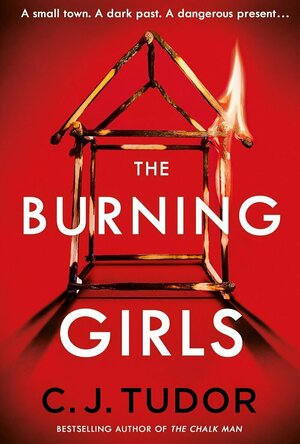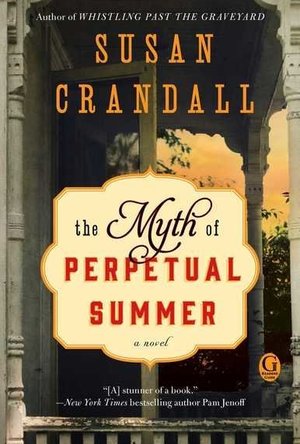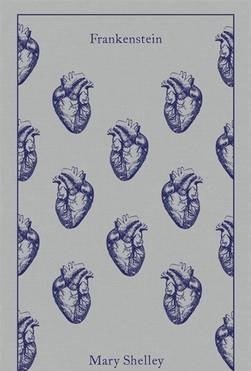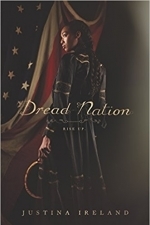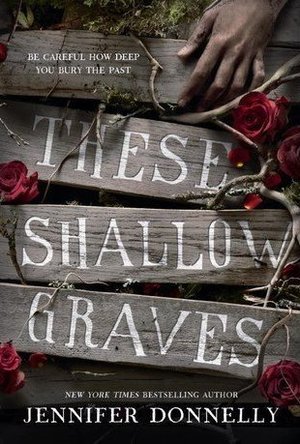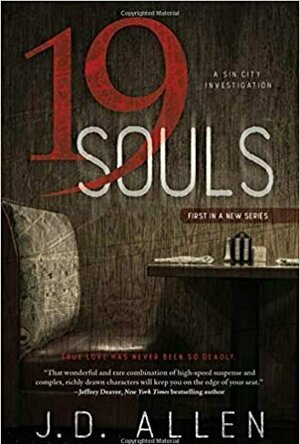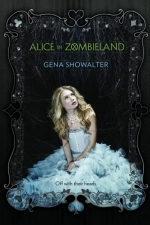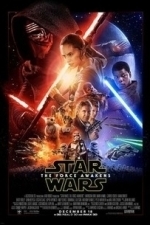Search
BookInspector (124 KP) rated The Burning Girls in Books
Jan 26, 2021
The protagonist in this book is Jack, a female vicar, that has been sent to a little village to take over the church that has been vacant. Her daughter Flo is a teenager that had to change her life from Nottingham to Chapel Croft. I really loved the brilliant selection of characters. They are all mysterious, intriguing and different. I thoroughly enjoyed Jacks thoughts about being a priest, the church’s role and religion in general. It was very modern and stigma defining. I really liked Flo as well, she seems like a very smart young lady, full of curiosity and teenage rebellion. 🙂
Like always, the narrative is creepy, mysterious and very well planned out. There are multiple stories running through this book. This book is told from multiple perspectives, and I absolutely adored that. Jack’s perspective investigates a story of two young ladies that disappeared thirty years ago and a mysterious suicide of the previous vicar. And Flo’s perspective shares very creepy encounters with local youth. The whole book is covered in a mysterious shroud, suspense is seeping through the pages, and the story simply had me absorbed. The topics discussed in this book are religion, evil youth, parenting issues, over the top religiousness, church work, vicar’s life, tight community nuances, murder and many more.
The writing style of this book is impeccable. C.J. Tudor’s writing is evolving with every single book. The setting and the mood of this book is perfect for horror, and the mystery just drives suspense through this novel. The chapters are pretty short, so it is a fast and gripping book. The culmination and the ending are brilliant, and I loved how the book was rounded up. I have to warn the reader, that this book has murders, pretty gross stories, burning people and psychopaths.
So, to conclude, this was my first book of 2021 and is going straight to my top 10 of this year. I loved everything about this novel, it has very unique and complex characters as well as an amazingly delivered plot full of twists, intriguing stories and mystery. I strongly recommend to anyone who loves Stephen King or a good mystery.
Like always, the narrative is creepy, mysterious and very well planned out. There are multiple stories running through this book. This book is told from multiple perspectives, and I absolutely adored that. Jack’s perspective investigates a story of two young ladies that disappeared thirty years ago and a mysterious suicide of the previous vicar. And Flo’s perspective shares very creepy encounters with local youth. The whole book is covered in a mysterious shroud, suspense is seeping through the pages, and the story simply had me absorbed. The topics discussed in this book are religion, evil youth, parenting issues, over the top religiousness, church work, vicar’s life, tight community nuances, murder and many more.
The writing style of this book is impeccable. C.J. Tudor’s writing is evolving with every single book. The setting and the mood of this book is perfect for horror, and the mystery just drives suspense through this novel. The chapters are pretty short, so it is a fast and gripping book. The culmination and the ending are brilliant, and I loved how the book was rounded up. I have to warn the reader, that this book has murders, pretty gross stories, burning people and psychopaths.
So, to conclude, this was my first book of 2021 and is going straight to my top 10 of this year. I loved everything about this novel, it has very unique and complex characters as well as an amazingly delivered plot full of twists, intriguing stories and mystery. I strongly recommend to anyone who loves Stephen King or a good mystery.

The School : White Day
Games
App
● Game Introduction ● The legendary classic horror game returns with full 3D graphics. The...
FilmIntuition (33 KP) rated The Myth of Perpetual Summer in Books
Jun 19, 2018
Tennessee Williams meets Anne Tyler in award-winning novelist Susan Crandall's gorgeously penned family opus. Centered on the oldest daughter of a unique Mississippi family, The Myth of Perpetual Summer is certain to appeal to book clubs.
Moving back and forth in time between 1972 and the late 1950s and early '60s, after she learns that her younger brother has been arrested for murder in a crime that's captured national attention, Tallulah James leaves the California home she's made for herself and returns back to her southern hometown where every corner holds dozens of memories.
Wondering where it all went wrong, after she finds unexpected help for her brother's case from an old crush and family friend, Ross Saenger, Tallulah begins seeking out answers for the many mysteries of the past including the truth about her brilliant but unstable father's family tree as well as her parents' turbulent relationship.
After beginning with quite the plot hook, the pace slows down considerably with Myth requiring a good eighty or so pages to establish both its characters and momentum to the point that it's hard to put down.
Having drawn comparisons to both The Secret Life of Bees and Forrest Gump, Crandall's Myth is also reminiscent of Mary Karr's memoirs. But while Myth eventually leads a majority of its characters to well earned conclusions, it's still slightly disappointing to see how quickly the author wraps up certain plot points. In fact, it's a main source of trouble for the otherwise moving last hundred pages of the novel. And nowhere is Crandall's difficulty in judging her reader's interest better epitomized than her decision to spend far more time on a romantic backstory with Tallulah and a character who appears out of thin air (whom we could care less about) than the one that Crandall built for nearly the entire length of the novel that pays off in two pages.
Though limited by the decision to present us with only one character's point-of-view, while the romantic plotline was in great need of either more obstacles or reflection, so were other characters throughout, including the one that's sure to be a reader favorite in the form of Tallulah's protective older brother, Griff. A major protagonist in the novel's extended flashback, I couldn't help but have wished he played an even greater role in the present day '70s storyline as he did in the past.
From the blink and you'll miss it decision for a main character to run away to the solution of a murder – both of which occur in a mere page or two – while there's enough going on in the plot and character heavy book to forgive some of its lopsided storytelling, Myth should've spent less time on extraneous subplots and more ink on what really matters.
Nonetheless a lovely work of Southern Gothic fiction anchored by a strong female protagonist, Crandall's promising Myth may have its flaws. But like a good glass of lemonade on a hot summer day, you can't enjoy the sweet without the sour and thankfully there's enough of both here to keep you coming back for more.
Note – I received an ARC of the novel through Bookish First and if given the opportunity, I would've rated it 7.5 stars.
Moving back and forth in time between 1972 and the late 1950s and early '60s, after she learns that her younger brother has been arrested for murder in a crime that's captured national attention, Tallulah James leaves the California home she's made for herself and returns back to her southern hometown where every corner holds dozens of memories.
Wondering where it all went wrong, after she finds unexpected help for her brother's case from an old crush and family friend, Ross Saenger, Tallulah begins seeking out answers for the many mysteries of the past including the truth about her brilliant but unstable father's family tree as well as her parents' turbulent relationship.
After beginning with quite the plot hook, the pace slows down considerably with Myth requiring a good eighty or so pages to establish both its characters and momentum to the point that it's hard to put down.
Having drawn comparisons to both The Secret Life of Bees and Forrest Gump, Crandall's Myth is also reminiscent of Mary Karr's memoirs. But while Myth eventually leads a majority of its characters to well earned conclusions, it's still slightly disappointing to see how quickly the author wraps up certain plot points. In fact, it's a main source of trouble for the otherwise moving last hundred pages of the novel. And nowhere is Crandall's difficulty in judging her reader's interest better epitomized than her decision to spend far more time on a romantic backstory with Tallulah and a character who appears out of thin air (whom we could care less about) than the one that Crandall built for nearly the entire length of the novel that pays off in two pages.
Though limited by the decision to present us with only one character's point-of-view, while the romantic plotline was in great need of either more obstacles or reflection, so were other characters throughout, including the one that's sure to be a reader favorite in the form of Tallulah's protective older brother, Griff. A major protagonist in the novel's extended flashback, I couldn't help but have wished he played an even greater role in the present day '70s storyline as he did in the past.
From the blink and you'll miss it decision for a main character to run away to the solution of a murder – both of which occur in a mere page or two – while there's enough going on in the plot and character heavy book to forgive some of its lopsided storytelling, Myth should've spent less time on extraneous subplots and more ink on what really matters.
Nonetheless a lovely work of Southern Gothic fiction anchored by a strong female protagonist, Crandall's promising Myth may have its flaws. But like a good glass of lemonade on a hot summer day, you can't enjoy the sweet without the sour and thankfully there's enough of both here to keep you coming back for more.
Note – I received an ARC of the novel through Bookish First and if given the opportunity, I would've rated it 7.5 stars.
Sass Perilla (36 KP) rated Frankenstein in Books
Aug 9, 2019
The plot and major themes. (1 more)
Further work it inspired.
Readable, but disjointed and repetitive in parts.
Contains spoilers, click to show
Fundamentally, the problem with this book is the narrator, Victor. He is thoroughly detestable. A selfish, cowardly, irresponsible, excuse ridden, narcissistic d****e-bag of the highest order. And unfortunately, it is Victor Frankenstein’s POV that we are forced into for the majority of the novel.
My hatred for and frustration with the self-pitying, feckless behaviour of the (pseudo)
protagonist made this an irritating read for me- and to an extent I think this was Shelley’s intention. Victor isn’t designed to be the likable, affable, morally “good” man fallen from grace he believes himself to be, and the horrific events that befall those around him are of his making.
However, this doesn’t make him any less grating! The "monster" (to me reminiscent of Caliban with his lyrical speech and enforced isolation, being neither man nor not man) is eloquent and persuasive when he asks his creator to account for his misdoings. So, you’ve got to ask yourself, if an infanticidal, demonic, bag of sew together corpses is actually more engaging than the main storyteller, is that storyteller really the
right character to be telling the story?
Now, with all that said, it is an important book. A work by a female author with strong female characters (albeit background characters) who was only nineteen when she wrote the initial draft. Very impressive. But, for me her youth is evident. When we teach secondary school pupils to write creatively, we often give them the ambiguous instruction “show don’t tell”, and for me the book is more of a list of horrible and horrific events told in a Chinese puzzle box style story within a story, rather than an engaging and “complete” narrative. It feels like she chooses to place focus on the wrong “bits”- for example the whole of chapter nineteen where Victor travels the British Isles, comments briefly on the local architecture of each town and city and
then repetitively reminds us that he couldn’t enjoy the surroundings because of his angst.
And I would have at least like to have seen some of the courtroom drama when Victor is tried for the death of Clerval...
So, I hate to be “that” gal, who poo-poos these fantastic works of fiction (we know they’re great because some clever-britches told us they were) but in all honesty, the novel ain’t that good, and I’ll maintain that stance no matter how clever the britches of the opposing schools of thought.
I think the continuing appeal is in it’s universal themes: parenting, nature versus
nurture; morality and scientific advancement- and the whole idea of stitching a creature out of
corpse-parts and electrocuting it to life is pretty darn cool. And there are some really effective
horror scenes, such as the vignette of Victor ripping apart project lady-monster (I kind wish she had a name- a working title- but given he can’t even be bothered to name monster number one I guess this was all too much to hope for).
It’s readable, but it’s value, for me at any rate, lies in the offshoots and creativity it has spawned, rather than the work itself.
My hatred for and frustration with the self-pitying, feckless behaviour of the (pseudo)
protagonist made this an irritating read for me- and to an extent I think this was Shelley’s intention. Victor isn’t designed to be the likable, affable, morally “good” man fallen from grace he believes himself to be, and the horrific events that befall those around him are of his making.
However, this doesn’t make him any less grating! The "monster" (to me reminiscent of Caliban with his lyrical speech and enforced isolation, being neither man nor not man) is eloquent and persuasive when he asks his creator to account for his misdoings. So, you’ve got to ask yourself, if an infanticidal, demonic, bag of sew together corpses is actually more engaging than the main storyteller, is that storyteller really the
right character to be telling the story?
Now, with all that said, it is an important book. A work by a female author with strong female characters (albeit background characters) who was only nineteen when she wrote the initial draft. Very impressive. But, for me her youth is evident. When we teach secondary school pupils to write creatively, we often give them the ambiguous instruction “show don’t tell”, and for me the book is more of a list of horrible and horrific events told in a Chinese puzzle box style story within a story, rather than an engaging and “complete” narrative. It feels like she chooses to place focus on the wrong “bits”- for example the whole of chapter nineteen where Victor travels the British Isles, comments briefly on the local architecture of each town and city and
then repetitively reminds us that he couldn’t enjoy the surroundings because of his angst.
And I would have at least like to have seen some of the courtroom drama when Victor is tried for the death of Clerval...
So, I hate to be “that” gal, who poo-poos these fantastic works of fiction (we know they’re great because some clever-britches told us they were) but in all honesty, the novel ain’t that good, and I’ll maintain that stance no matter how clever the britches of the opposing schools of thought.
I think the continuing appeal is in it’s universal themes: parenting, nature versus
nurture; morality and scientific advancement- and the whole idea of stitching a creature out of
corpse-parts and electrocuting it to life is pretty darn cool. And there are some really effective
horror scenes, such as the vignette of Victor ripping apart project lady-monster (I kind wish she had a name- a working title- but given he can’t even be bothered to name monster number one I guess this was all too much to hope for).
It’s readable, but it’s value, for me at any rate, lies in the offshoots and creativity it has spawned, rather than the work itself.
Goddess in the Stacks (553 KP) rated Dread Nation in Books
Jul 24, 2018
So, as a general rule, I don't read zombie stories. Zombies are the one monster that will almost invariably give me nightmares. This book, however, had such hype built up around it that I decided to bend my rule.
I should not have.
Before I start in on this, let me say it's a good story. It's well-written, the plot is paced nicely, and it's entertaining. All that said, it's quite problematic in many ways. I knew some of this before I read it; there was a Twitter thread about some of the issues, namely that in the Author's Note she describes the Native American boarding schools (where the government forced Native American children to go, and tried to destroy their heritage and culture in the name of "civilizing" them) as "well-meaning." The Twitter thread does an excellent job of dissecting that passage, and it's worth reading.
There's also the incredibly unrealistic scene where Jane gets flogged eleven times, walks back to where she's staying, has a coherent conversation where she lays out a plan she has formed, and then puts a shirt on. That last part especially got me. Like, what? You're going to be in more pain than that! Being flogged barely seems to slow Jane down. She asks for laudanum - for her plan. Not to take for the pain.
I don't know. There's a lot about the book that set my teeth on edge. There's the absurd amount of racism, but the protagonist is a black woman and it's civil war era, so that's to be expected. And it's coming from characters, not from narration. Jane lies. A lot. So it's hard to trust that she's even a reliable narrator.
I guess it's okay. I didn't care for it. I found it really hard to get past the author's "well-meaning" comment about the Native American boarding schools. And the plot of "as soon as they're old enough, black children get sent to combat schools." Especially with what's going on lately with the jailing of migrant children, it feels tone-deaf, ignorant, and genocidal.
One good point was the oh-so-casual mention of bisexuality (a female friend taught her "everything she knows about kissing") but it was only two sentences and never mentioned again. Not nearly enough to make up for the rest of the book.
You can find all my review at http://goddessinthestacks.wordpress.com
I should not have.
Before I start in on this, let me say it's a good story. It's well-written, the plot is paced nicely, and it's entertaining. All that said, it's quite problematic in many ways. I knew some of this before I read it; there was a Twitter thread about some of the issues, namely that in the Author's Note she describes the Native American boarding schools (where the government forced Native American children to go, and tried to destroy their heritage and culture in the name of "civilizing" them) as "well-meaning." The Twitter thread does an excellent job of dissecting that passage, and it's worth reading.
There's also the incredibly unrealistic scene where Jane gets flogged eleven times, walks back to where she's staying, has a coherent conversation where she lays out a plan she has formed, and then puts a shirt on. That last part especially got me. Like, what? You're going to be in more pain than that! Being flogged barely seems to slow Jane down. She asks for laudanum - for her plan. Not to take for the pain.
I don't know. There's a lot about the book that set my teeth on edge. There's the absurd amount of racism, but the protagonist is a black woman and it's civil war era, so that's to be expected. And it's coming from characters, not from narration. Jane lies. A lot. So it's hard to trust that she's even a reliable narrator.
I guess it's okay. I didn't care for it. I found it really hard to get past the author's "well-meaning" comment about the Native American boarding schools. And the plot of "as soon as they're old enough, black children get sent to combat schools." Especially with what's going on lately with the jailing of migrant children, it feels tone-deaf, ignorant, and genocidal.
One good point was the oh-so-casual mention of bisexuality (a female friend taught her "everything she knows about kissing") but it was only two sentences and never mentioned again. Not nearly enough to make up for the rest of the book.
You can find all my review at http://goddessinthestacks.wordpress.com
Hazel (1853 KP) rated These Shallow Graves in Books
Dec 17, 2018
<i>This eBook was provided by the publisher via NetGalley in exchange for an honest review </i>
Known for her young adult series about mermaids, Jennifer Donnelly also proves she is an excellent writer of historical murder mysteries. <i>These Shallow Graves</i> is set in the USA during the late 1800s where Josephine Montfort, a headstrong seventeen-year-old from a respectable family, is expected to marry well and produce a male heir. However, Jo’s innocent lifestyle is disrupted after her father’s mysterious death. With her passion for writing at the forefront of her mind, Jo rejects social etiquette and begins searching for answers.
Jo meets Eddie, a young, ambitious newspaper reporter who agrees to assist with her enquiries. However it is not as straightforward as Jo expects it to be. As the pair begin to uncover dangerous secrets, Jo is also witness to the injustices in the world. Life for the rich was a whole different world from that of the poor, but as Jo learns, that does not make anyone less worthy of being treated as a person.
<i>These Shallow Graves</i> is an exciting story that is gripping from beginning to end. Not only is there a crime to solve, Jo also ends up in a forbidden relationship that crosses the boundaries of her social status. From an historical point of view it is refreshing to read of a female challenging her position in society rather than being the naïve protagonist that many novels written during this time period contain. In some ways she is comparable to Jo March in <i>Little Women</i>, and not only because of their shared name.
Having read the first two books in the <i>Waterfire</i> saga, and been slightly disappointed with the writing style, I was a little apprehensive when beginning to read <i>These Shallow Graves</i>. I presumed I would get bored part way through, or find the narrative dreary, however I was pleasantly surprised. Donnelly is significantly better at historical fiction. The book was greatly researched thus the setting and dialogue were perfectly in keeping with the time period.
As with most murder mysteries the murderer is only revealed at the very end of the story. I guessed who it was fairly early on, however that is all it was, a guess. Most readers will be left hanging until the final chapters – will you work out who it was before then?
Known for her young adult series about mermaids, Jennifer Donnelly also proves she is an excellent writer of historical murder mysteries. <i>These Shallow Graves</i> is set in the USA during the late 1800s where Josephine Montfort, a headstrong seventeen-year-old from a respectable family, is expected to marry well and produce a male heir. However, Jo’s innocent lifestyle is disrupted after her father’s mysterious death. With her passion for writing at the forefront of her mind, Jo rejects social etiquette and begins searching for answers.
Jo meets Eddie, a young, ambitious newspaper reporter who agrees to assist with her enquiries. However it is not as straightforward as Jo expects it to be. As the pair begin to uncover dangerous secrets, Jo is also witness to the injustices in the world. Life for the rich was a whole different world from that of the poor, but as Jo learns, that does not make anyone less worthy of being treated as a person.
<i>These Shallow Graves</i> is an exciting story that is gripping from beginning to end. Not only is there a crime to solve, Jo also ends up in a forbidden relationship that crosses the boundaries of her social status. From an historical point of view it is refreshing to read of a female challenging her position in society rather than being the naïve protagonist that many novels written during this time period contain. In some ways she is comparable to Jo March in <i>Little Women</i>, and not only because of their shared name.
Having read the first two books in the <i>Waterfire</i> saga, and been slightly disappointed with the writing style, I was a little apprehensive when beginning to read <i>These Shallow Graves</i>. I presumed I would get bored part way through, or find the narrative dreary, however I was pleasantly surprised. Donnelly is significantly better at historical fiction. The book was greatly researched thus the setting and dialogue were perfectly in keeping with the time period.
As with most murder mysteries the murderer is only revealed at the very end of the story. I guessed who it was fairly early on, however that is all it was, a guess. Most readers will be left hanging until the final chapters – will you work out who it was before then?
BookInspector (124 KP) rated 19 Souls in Books
Sep 24, 2020
I really liked the cover of this book, I think it is simple but at the same time it is dark and mysterious, and I knew it is going to bring a good story to read.
The protagonist of this story is Jim Bean, a private investigator, who was summoned by a female customer (Sophie) to find her brother. But when he starts his investigation, he uncovers so many surprises, that gets him into great trouble. Now, he has to protect the person, whom he was looking for…
I really loved the characters chosen for this book, all of them are very intriguing and charismatic personalities, and the author has done a great job by developing them throughout the book. The story is told from a dual perspective: Jim’s and Sophie’s. I really liked reading all the details about Jim’s investigation, and where the evidence took him. I liked that he had to visit some dark and dangerous places to get his information, and I was really sucked in with all the unexpected twists and turns which Allen incorporated into the story. I absolutely loved Sophie’s parts, I think she is such an interesting and delusional character, and to read her thoughts and plans was an absolute treat. I love when authors include negative character’s perspectives, it makes the book way more interesting and absorbing. One thing that bothered me was that I don’t like when authors create drug using characters and make it sound like it is ok, and they are so cool. :/ I don’t see the need to promote drugs.
The narrative is set in the US, and the setting is always changing. The investigation is pretty adventurous, but sometimes the whole story tended to slow down a little by sharing Jim’s thoughts and inner fights, which was quite nice. I really enjoyed the writing style of this book, it is easy to read, with pretty short chapters, constantly changing situations and new findings, and it is a really entertaining book. The ending of this novel rounded up the story nicely and I will be waiting for more of Jim Bean’s adventures in the future. So, if you enjoy detective investigations and character-driven stories, this book will not disappoint you. Give this book a go, and I hope you will enjoy it as much as I did.
The protagonist of this story is Jim Bean, a private investigator, who was summoned by a female customer (Sophie) to find her brother. But when he starts his investigation, he uncovers so many surprises, that gets him into great trouble. Now, he has to protect the person, whom he was looking for…
I really loved the characters chosen for this book, all of them are very intriguing and charismatic personalities, and the author has done a great job by developing them throughout the book. The story is told from a dual perspective: Jim’s and Sophie’s. I really liked reading all the details about Jim’s investigation, and where the evidence took him. I liked that he had to visit some dark and dangerous places to get his information, and I was really sucked in with all the unexpected twists and turns which Allen incorporated into the story. I absolutely loved Sophie’s parts, I think she is such an interesting and delusional character, and to read her thoughts and plans was an absolute treat. I love when authors include negative character’s perspectives, it makes the book way more interesting and absorbing. One thing that bothered me was that I don’t like when authors create drug using characters and make it sound like it is ok, and they are so cool. :/ I don’t see the need to promote drugs.
The narrative is set in the US, and the setting is always changing. The investigation is pretty adventurous, but sometimes the whole story tended to slow down a little by sharing Jim’s thoughts and inner fights, which was quite nice. I really enjoyed the writing style of this book, it is easy to read, with pretty short chapters, constantly changing situations and new findings, and it is a really entertaining book. The ending of this novel rounded up the story nicely and I will be waiting for more of Jim Bean’s adventures in the future. So, if you enjoy detective investigations and character-driven stories, this book will not disappoint you. Give this book a go, and I hope you will enjoy it as much as I did.
BobbiesDustyPages (1259 KP) rated Alice in Zombieland - White Rabbit Chronicles in Books
Jul 23, 2017
This was bad. read in 2013
Contains spoilers, click to show
I have to say this is one of the most misleading titles I have ever seen. I was really excited to read this book it sounded interesting and I've been a fan of both Alice in Wonderland and Zombies since I was just a kid so this seemed right up my alley..too bad that's not what I got at all. I read a little less than half the book and I just couldn't make myself finish it it was causing me actual pain.
One of the things that really got to me that actually had nothing to do with the plot was that it was so damn preachy and that was only in the first chapter, I don't mind books that talk about religion or a charter having a set religion but please do not make me feel like I'm being tricked in to going to church with out warning.
The only thing that this book had to do with Alice in Wonderland was a cloud that looked like a white rabbit, the name Alice and a few very small things.
Also, it was like the author looked up every cliche for a YA book and every teenage cliche from books and movies,(the perfect popular girl, the stunningly pretty but I'm so average protagonist, and the dark bad boy and slut shaming.)threw them in a blender and came out this.
Alice or Ali could have been a strong female lead but she came off as a mean, selfish, and a whiny person that I did not connect with at all, actually the only character I kind of like was her little sister Emma..and that didn't last long.
Cole was absolutely horrid, please stop making these alpha male asshole characters in YA books it's not clever or cute or romantic it down right unhealthy.
The writing was about average and since I know nothing about this author it doesn't really make me want to give any of her other works even a chance if this is what I'm in for.
The only thing I liked about this book was the title which wasn't even original and the cover art.
So all in all if you're looking for:
A take on Alice in Wonderland
Zombies and everything that comes with them
A teen girl kicking ass and killing the undead
Actual zombies at all
A good book
Then move along and don't waste your money because you'll get none of that here.
One of the things that really got to me that actually had nothing to do with the plot was that it was so damn preachy and that was only in the first chapter, I don't mind books that talk about religion or a charter having a set religion but please do not make me feel like I'm being tricked in to going to church with out warning.
The only thing that this book had to do with Alice in Wonderland was a cloud that looked like a white rabbit, the name Alice and a few very small things.
Also, it was like the author looked up every cliche for a YA book and every teenage cliche from books and movies,(the perfect popular girl, the stunningly pretty but I'm so average protagonist, and the dark bad boy and slut shaming.)threw them in a blender and came out this.
Alice or Ali could have been a strong female lead but she came off as a mean, selfish, and a whiny person that I did not connect with at all, actually the only character I kind of like was her little sister Emma..and that didn't last long.
Cole was absolutely horrid, please stop making these alpha male asshole characters in YA books it's not clever or cute or romantic it down right unhealthy.
The writing was about average and since I know nothing about this author it doesn't really make me want to give any of her other works even a chance if this is what I'm in for.
The only thing I liked about this book was the title which wasn't even original and the cover art.
So all in all if you're looking for:
A take on Alice in Wonderland
Zombies and everything that comes with them
A teen girl kicking ass and killing the undead
Actual zombies at all
A good book
Then move along and don't waste your money because you'll get none of that here.
Rachel King (13 KP) rated The Virgin Cure in Books
Feb 11, 2019
I loved Ami McKay's first book, The Birth House, so I was eager to read this one without even knowing the synopsis. This book did not really live up to the quality of the first book, but I did still enjoy it. While the title conveys the idea that the focus of the book is this social problem of the myth of the "virgin cure", in reality the book was really about the life of the main character, Moth. The virgin cure only plays a part in two small events, and serves better as a footnote to Moth's life.
Moth is quite an interesting girl from the start, having the maturity of a much older person as she deals with her mother's methods of making money along with her drinking habits, even as she finds her own ways of survival. Despite being of such a young age, she is aware of the struggles of the people around her and knows enough to recognize what a better life would look like for herself - even beyond the trappings of wealth. While sold by her own mother for the price of a sack of coins, Moth still longs to impress her and return to her. From there, she encounters one horror after another, many hidden behind a veneer of wealth and privilege. Her desires propel her to take on a different name in an effort to change her very identity into the kind of person she longs to be.
Dr. Sadie's intervention into Moth's life provides a nice contrast to what Moth lived with day-to-day. As McKay's original protagonist, she provided another appealing way of life other than one of wealth and privilege. Her journal entries in the book also showed how Moth appeared to others. Despite the struggles that Dr. Sadie endured as a female physician, I liked the part she played in Moth's life and the things she showed Moth.
As for the format of the book, I found it a bit strange sometimes. The pages often held side notes that had little to do with the plot, and were better at serving as distractions, plus chapters often began with poems or quotes that were vague at best and required some intelligent deciphering to figure out how they contributed to the book. The journal entries of Dr. Sadie that peppered the book held the most valuable writing, as it fit in with the timeline of the plot. I think the book would have fared better with less distractions, more plotting, and a better title.
Moth is quite an interesting girl from the start, having the maturity of a much older person as she deals with her mother's methods of making money along with her drinking habits, even as she finds her own ways of survival. Despite being of such a young age, she is aware of the struggles of the people around her and knows enough to recognize what a better life would look like for herself - even beyond the trappings of wealth. While sold by her own mother for the price of a sack of coins, Moth still longs to impress her and return to her. From there, she encounters one horror after another, many hidden behind a veneer of wealth and privilege. Her desires propel her to take on a different name in an effort to change her very identity into the kind of person she longs to be.
Dr. Sadie's intervention into Moth's life provides a nice contrast to what Moth lived with day-to-day. As McKay's original protagonist, she provided another appealing way of life other than one of wealth and privilege. Her journal entries in the book also showed how Moth appeared to others. Despite the struggles that Dr. Sadie endured as a female physician, I liked the part she played in Moth's life and the things she showed Moth.
As for the format of the book, I found it a bit strange sometimes. The pages often held side notes that had little to do with the plot, and were better at serving as distractions, plus chapters often began with poems or quotes that were vague at best and required some intelligent deciphering to figure out how they contributed to the book. The journal entries of Dr. Sadie that peppered the book held the most valuable writing, as it fit in with the timeline of the plot. I think the book would have fared better with less distractions, more plotting, and a better title.
LeftSideCut (3776 KP) rated Star Wars: Episode VII - The Force Awakens (2015) in Movies
Dec 10, 2019 (Updated Dec 10, 2019)
The Force Awakens is a damn good return to the Star Wars saga, reintroducing us to beloved characters that we haven't seen in decades, whilst simultaneously introducing new and exciting blood.
The new characters take centre stage here - the most important of course being Rey. It's great that in this day and age, young girls all over the world have a strong female protagonist to look up to within Star Wars. There have of course been some great heroines before, but Rey is well developed over the course of TFA, is extremely likable, incredibly badass, and represents the ever heroic light side.
Over on the dark side, we are introduced to Kylo Ren, a villain who idolises the now legendary Darth Vader, to the point where he even wheres a mask. Ren feels emotionally unstable and dangerous throughout, and gives a strong villain for this new trilogy.
We also have Finn, a Stormtrooper who defects after seeing war atrocities commuted by the First Order. This storyline feels important, and it's nice to see that Stormtroopers are human under the armour.
And we also have Poe Dameron. Poe is my least favorite out of the new characters in all honesty. He doesn't feel all that relevant, but he's entertaining enough.
The inclusion of Chewbacca, Han Solo, C3-P0 and Leia, give us a nice shot if nostalgia, as all of our protagonists fight to thwart The First Order, and search for the AWOL Like Skywalker at the same time.
The set pieces and action sequences are nothing short of breathtaking. The CGI is top notch, and Star Wars has honestly never looked this good. All the great thing that JJ Abrams bought to his Star Trek reboot are replicated here and then some.
Saying that, he does play it safe when it comes to the plot, and a lot of the film has a familiar feeling to it. A handful of plot elements borrow heavily from A New Hope, sometimes feeling like a re tread, but for those of us who are less cynical, we can always view it as a love letter instead, from a man who adores Star Wars just as much as we do.
Once again, John Williams provides a fantastic score, and just like that, Star Wars is exciting again.
TFA has flaws here and there, but it's the best Star Wars movie since the original trilogy concluded, and it puts a huge smile on my face.
The new characters take centre stage here - the most important of course being Rey. It's great that in this day and age, young girls all over the world have a strong female protagonist to look up to within Star Wars. There have of course been some great heroines before, but Rey is well developed over the course of TFA, is extremely likable, incredibly badass, and represents the ever heroic light side.
Over on the dark side, we are introduced to Kylo Ren, a villain who idolises the now legendary Darth Vader, to the point where he even wheres a mask. Ren feels emotionally unstable and dangerous throughout, and gives a strong villain for this new trilogy.
We also have Finn, a Stormtrooper who defects after seeing war atrocities commuted by the First Order. This storyline feels important, and it's nice to see that Stormtroopers are human under the armour.
And we also have Poe Dameron. Poe is my least favorite out of the new characters in all honesty. He doesn't feel all that relevant, but he's entertaining enough.
The inclusion of Chewbacca, Han Solo, C3-P0 and Leia, give us a nice shot if nostalgia, as all of our protagonists fight to thwart The First Order, and search for the AWOL Like Skywalker at the same time.
The set pieces and action sequences are nothing short of breathtaking. The CGI is top notch, and Star Wars has honestly never looked this good. All the great thing that JJ Abrams bought to his Star Trek reboot are replicated here and then some.
Saying that, he does play it safe when it comes to the plot, and a lot of the film has a familiar feeling to it. A handful of plot elements borrow heavily from A New Hope, sometimes feeling like a re tread, but for those of us who are less cynical, we can always view it as a love letter instead, from a man who adores Star Wars just as much as we do.
Once again, John Williams provides a fantastic score, and just like that, Star Wars is exciting again.
TFA has flaws here and there, but it's the best Star Wars movie since the original trilogy concluded, and it puts a huge smile on my face.
